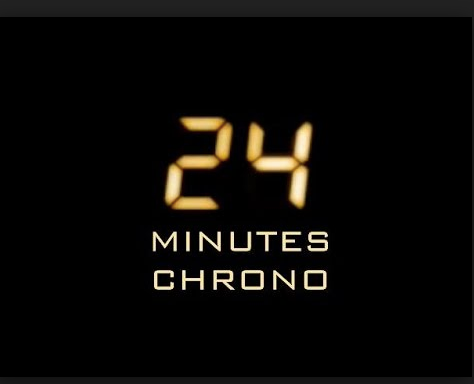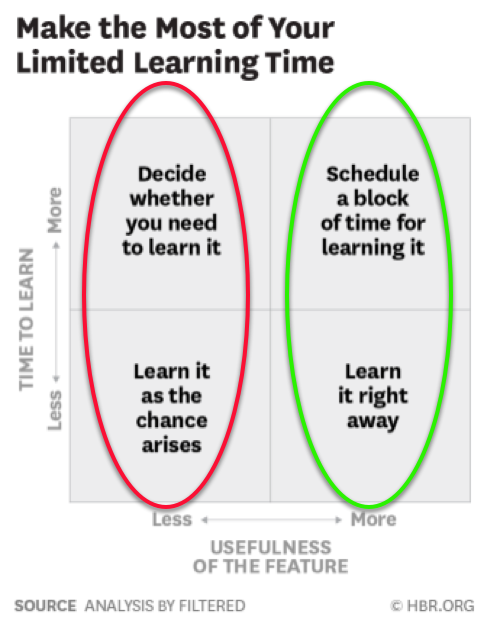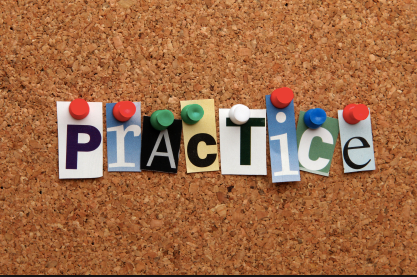The most inspiring people find the time to actively work on themselves. They are intentional and make conscious choices – about why what and how they are learning. Continued growth and reaching their destination follows.
As someone focused on serving professionals in their growth efforts, I’m always thinking about how to contribute to the development roadmap of people eager to learn.
The most inspiring people find the time, against the odds, to actively work on themselves. I observe with them a development roadmap or game plan even if not presented as such. They are intentional and make conscious choices – about why what and how they are learning.
There is no single, right roadmap. But there is value in walking through each of these doorways as you evaluate or build an approach that works for you.
Enter here…
24 Minutes
Time is the ultimate currency. Dynamic personal and professional lives leave little time for professional development.
The following realities of leadership and development, outlined in Leading In Learning by Deloitte Learning Solutions, are in play:
- People are developing and accessing personal and professional networks to obtain information about their industries and professions.
- Rapid change in business and organizations means everyone needs to be learning continually.
- More and more people are looking for options on their own because they aren’t getting what they need from their employers.

Against that backdrop, they estimate:
1% of a typical work week is all that employees have to focus on training and development.
Yikes!
In a 40 hour work week, that means 24 minutes a week. That doesn’t imply much growth. People dedicated to professional growth somehow, someway make more time inside or outside their regular hours than 24 minutes a week.
Related: Do You Know The Warning Signs Your Career Is In Jeopardy
Why Bother
Central to making time, in a busy life is motivation. You have a world of choices on how to spend it and potentially even more distractions.
What’s your motivation? Or said differently, what’s your why?
- Is it about achieving excellence in your current role?
- Do you want a broader or different role or job that requires an enhanced skill set?
- Do you want out and have your sights on something entrepreneurial?
- Is it family and what you can do for them with professional development – time, money, etc.?
Whatever is your why – it’s about being precise with yourself and committed.
Motivation provides both fuel and discipline to build winning habits to enable and support your development game plan.
Leaders are readers but they also remember that the important part isn't the reading, it's the application. Learn something? Use it. #leadership #success
— Alli Polin (@AlliPolin) May 16, 2018
What To Focus On
The article A 2×2 Matrix To Help You Prioritize The Skills To Learn Right Now provides a helpful framework to help you think and prioritize.
The matrix contrasts the time (meaning your time) to learn and the importance to you (how likely you are to use the skill or the utility). The dimensions are:
- Learn it right away: high utility, low time-to-learn
- Schedule a block of time for learning it: high utility, high time-to-learn
- Learn it as the chance arises: low utility, low time-to-learn
- Decide whether you need to learn it: low utility, high time-to-learn
Let’s start with the blocks in green. The lower right (learn right away) you can think of as quick wins. Skills that will help you do something you do frequently much more efficiently. Conversely, the upper right (schedule a block of time) are the more game-changing things. They are valuable but in turn, take time.
On the left-hand side, you have skills that are less useful. Some take a small amount of time (lower left). Others take much more time (decide whether you need to learn it). Limited use and much time to learn, follow to the bottom of the pile.
Now, you don’t need to draw a grid, but it is helpful to think through, for you, what falls into the red or green buckets. From there it’s about purposing what time you have (or create) to those areas where you will drive value.

[Sidebar, ask every candidate you interview what they are working on about themselves. There is no one right answer. However, the answer will reveal their approach to self-improvement and perhaps something about their humility. If they aren’t working on anything, find someone who is!]
Building A Development Roadmap Means Deciding The How
There is a variety of methods for learning. They include self-directed (reading, watching), classroom style, online, observing/listening and through experience. It is mainly about accessibility and preferences. We have all heard the idea of going with a preferred learning style to be most effective.
Turns out that is more myth than reality!
We think we learn better according to our so-called learning style: visual, auditory, and kinesthetic. But the overwhelming evidence is that we don't.
We all learn through listening, reading, and doing.https://t.co/7eCI1HOAyG— Adam Grant (@AdamMGrant) April 10, 2018
As Adam Grant says in his tweet:
We all learn by listening, reading and doing.
If You Want To Learn, Teach
Explaining a concept or topic to someone else requires knowledge, context and the ability to deliver a narrative. Thus, the reason teaching is such an effective way to learn or increase your depth.
While we teach we learn – Roman Philosopher Seneca
It can be downright scary to think about teaching something when you are in learning mode. I’ve done this several times with technical topics. It requires you to both deepen your understanding and find your voice. And the acts of putting together your talking points and presentation, force you through comprehensive learning.
It’s some real work. The thing is…it works.
Some science behind all this: Learning By Teaching Is Extremely Effective
Deliberate & Directed Practice
There are things you can learn by reading or watching. There are other things like skills you can not.
Think sports or cooking you can’t learn how to hit a sand wedge or put a fine chop on an onion by reading about it. You need to pick up a club or a knife (and in that order!)
So, how do you improve a skill and get good at something? How do you go from good to extraordinary?
Jonathan Fields discusses the basics of deliberate and directed practice on his Good Life Project podcast episode. The headlines:
Why You Need a Teacher (even if you’re sure you don’t)
- Straight practice or repetition is not enough. While you find incremental gains, they diminish.
- Deliberate practice is hyper-focused on progress. It requires alternating between doing and analyzing your performance around a specific growth element. It allows you to plow learnings into the next repetition or practice. You can hit a wall here, however.
- Directed practice means you include someone else, a teacher, mentor or coach. You gain an outside perspective, so you don’t hit the wall of deliberate practice that results from isolation. The trade-ff you give up complete autonomy.
Deliberate and directed practice are tools for you to use in your roadmap depending on the growth element in focus.
Beyond The 24 Minutes
Pulling this all together into a development roadmap:
Why am I doing this helps you prioritize and commit beyond the 1% or 24 minutes.
+
What should I focus on help determine how to spend the time you allocate.
+
How guides the best methods to maximize learning.
TOTAL — you build an intentional development roadmap aligned with your motivations and aspirations.
Think about your personal and professional goals and aspirations. Layout a roadmap to put you on a path to be wildly successful!
An Extra For You:
Here is Stanford Professor, John Gardner’s speech to a senior group of McKinsey Consultants entitled Personal Renewal. It is a wonderfully thought-provoking read for any early, mid or late career professional.
Click here for a PDF of the Personal Renewal speech.


